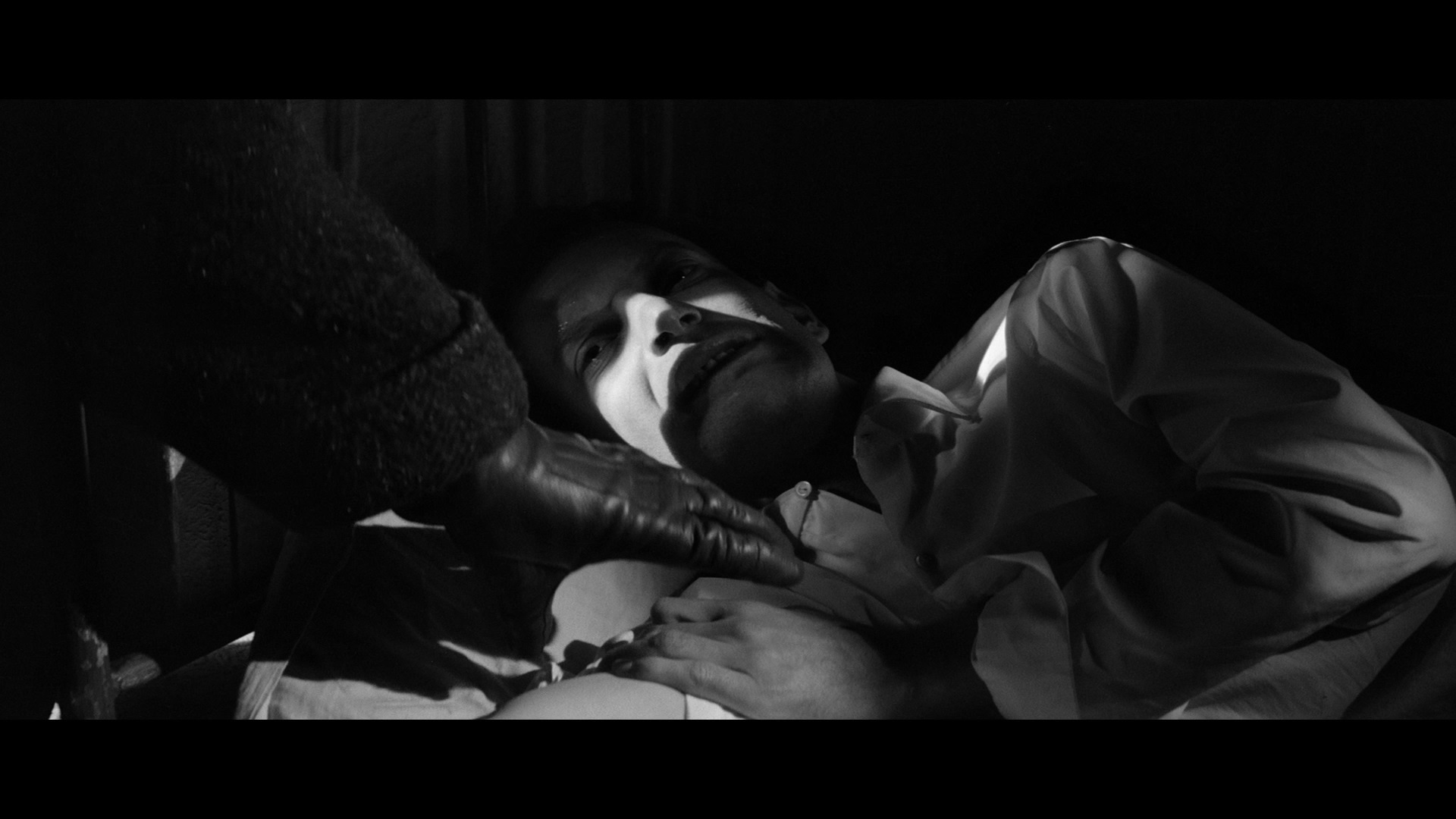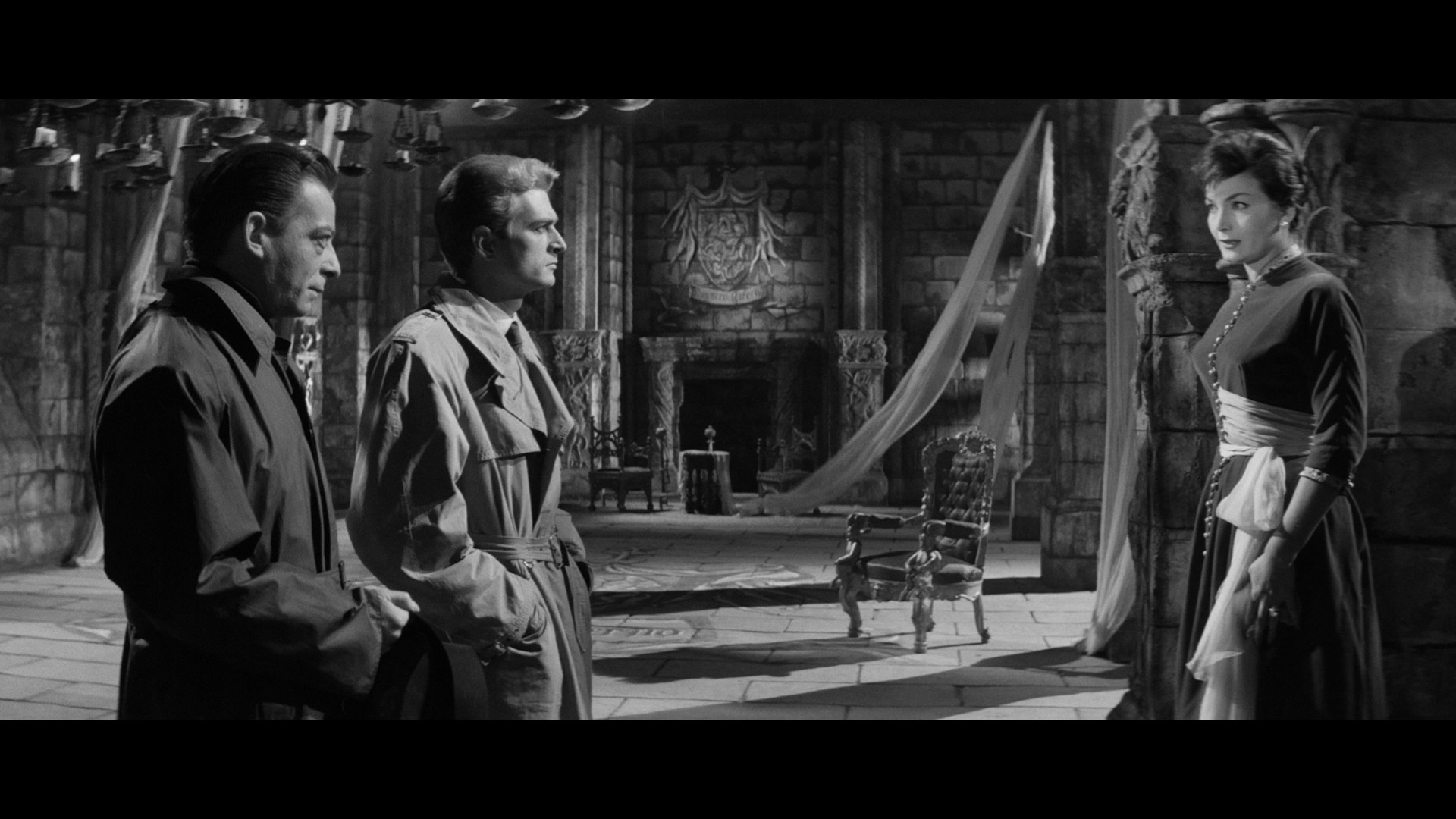



 few can claim more importance than the first modern, bona fide Italian film in
few can claim more importance than the first modern, bona fide Italian film in  the genre, I Vampiri. Director Riccardo Freda had already proven himself on a wide array of projects ranging from peplums to opulent historical dramas, but thanks to this film, he became forever associated with the fantastique -- and of equal importance is its cinematographer, Mario Bava, who stepped in direct additional days of shooting to "save" what the producer felt was an insufficient film. Bava's eye for crafty visual ideas are already in abundance here, and it isn't too difficult to spot his contributions including several images that would go on to be developed in his later films as a director starting with 1960's Black Sunday. The film wasn't a hit in Italy and ended up being promoted as a disposable exploitation item overseas, but it still casts a long shadow with dozens of films in its wake that couldn't exist without it.
the genre, I Vampiri. Director Riccardo Freda had already proven himself on a wide array of projects ranging from peplums to opulent historical dramas, but thanks to this film, he became forever associated with the fantastique -- and of equal importance is its cinematographer, Mario Bava, who stepped in direct additional days of shooting to "save" what the producer felt was an insufficient film. Bava's eye for crafty visual ideas are already in abundance here, and it isn't too difficult to spot his contributions including several images that would go on to be developed in his later films as a director starting with 1960's Black Sunday. The film wasn't a hit in Italy and ended up being promoted as a disposable exploitation item overseas, but it still casts a long shadow with dozens of films in its wake that couldn't exist without it. around Paris. When his girlfriend seems to become one of the victims, reporter Pierre Lantin (D'Angelo) investigates and, trailing a shifty addict named Joseph (Jess Franco regular Muller), follows a trail of clues to the Du Grand family based out of a sprawling castle. Among the inhabitants are Professor Julian Du Grand and the beautiful Gisele, as well as her elderly aunt, Magherita (or Marguerite, depending which version you watch). Meanwhile Julian is conducting some strange experiments in his lab designed to crack the secret to eternal life, which might have something to do with all those recent homicides.
around Paris. When his girlfriend seems to become one of the victims, reporter Pierre Lantin (D'Angelo) investigates and, trailing a shifty addict named Joseph (Jess Franco regular Muller), follows a trail of clues to the Du Grand family based out of a sprawling castle. Among the inhabitants are Professor Julian Du Grand and the beautiful Gisele, as well as her elderly aunt, Magherita (or Marguerite, depending which version you watch). Meanwhile Julian is conducting some strange experiments in his lab designed to crack the secret to eternal life, which might have something to do with all those recent homicides.  thrills, and crime procedural, I Vampiri straddles the line between classic horror and the more modern medical chills in a manner similar to the later Eyes without a Face and The Awful Dr. Orlof, among many others. It's a beautifully crafted film with the lavish CinemaScope framing giving it a classy sheen, though that also means close ups are few and far between with more of an emphasis on long takes. Also noteworthy is the memorable score by Roman Vlad, a prestige composer at the time who went on to score Caltiki, the Immortal Monster and The Horrible Dr. Hichcock (with this score recycled as stock music a few times for good measure).
thrills, and crime procedural, I Vampiri straddles the line between classic horror and the more modern medical chills in a manner similar to the later Eyes without a Face and The Awful Dr. Orlof, among many others. It's a beautifully crafted film with the lavish CinemaScope framing giving it a classy sheen, though that also means close ups are few and far between with more of an emphasis on long takes. Also noteworthy is the memorable score by Roman Vlad, a prestige composer at the time who went on to score Caltiki, the Immortal Monster and The Horrible Dr. Hichcock (with this score recycled as stock music a few times for good measure).  HD restoration turned up in 2023, appearing almost simultaneously in Germany from Plaion as Der Vampir von Notre Dame (extremely tough to find at first but given a reissue in late 2024), in Italian or German with optional German subtitles, and in France from Sidonis in Italian with French subtitles, featuring a 45-minute appraisal by filmmaker Christophe Gans, a 22m29s one by Olivier Père, and a 10m44s reel of the added scenes.
HD restoration turned up in 2023, appearing almost simultaneously in Germany from Plaion as Der Vampir von Notre Dame (extremely tough to find at first but given a reissue in late 2024), in Italian or German with optional German subtitles, and in France from Sidonis in Italian with French subtitles, featuring a 45-minute appraisal by filmmaker Christophe Gans, a 22m29s one by Olivier Père, and a 10m44s reel of the added scenes.  actors major and minor, and fun observations about little background details including the usual Bava visual trickery right down to a staircase you might not notice. Also included in the special features are the two English-language export versions that still exist: Lust of the Vampire (65m36s), the British version presented in an HD scan from a print held by the BFI National Archive and featuring English SDH subs, and The Devil's Commandment (72m18s) in SD with no subs. Both are 16x9 and scope, and they have the bath attack scene at the beginning along with numerous variations in English dubbing and music replacement choices. The U.S. version adds some extra mildly titillating and spooky footage for good measure (like rodents). On the video extras side, "Bloodthirst" (17m17s) is a Freak-o-Rama featurette from Federico Caddeo about the film's production and its status as the "first" real Italian horror film, featuring film historian Fabio Melelli with a wealth of archival material including coverage of Bava and Dario Michaelis. The highlight is easily a TV demonstration by Bava of the film's most spectacular in-camera effect, which he later reprised in an even more dramatic fashion near the end of Black Sunday. Then you get a Lamberto Bava interview (14m44s) talks about his father's early career, his entry into the business, and his work as a cinematographer and visual effects maestro that made him a prized presence on films like this. Both were first issued on the German Blu-ray but are subtitled here for the first time. Finally an interview with Leon Hunt (20m55s), author of Mario Bava: The Artisan as Italian Horror Auteur, analyzes the film as part of a late '50s Gothic revival running alongside Hammer and a continuing promotional back-and-forth between Italy and the U.K. Also included is an SD American trailer.
actors major and minor, and fun observations about little background details including the usual Bava visual trickery right down to a staircase you might not notice. Also included in the special features are the two English-language export versions that still exist: Lust of the Vampire (65m36s), the British version presented in an HD scan from a print held by the BFI National Archive and featuring English SDH subs, and The Devil's Commandment (72m18s) in SD with no subs. Both are 16x9 and scope, and they have the bath attack scene at the beginning along with numerous variations in English dubbing and music replacement choices. The U.S. version adds some extra mildly titillating and spooky footage for good measure (like rodents). On the video extras side, "Bloodthirst" (17m17s) is a Freak-o-Rama featurette from Federico Caddeo about the film's production and its status as the "first" real Italian horror film, featuring film historian Fabio Melelli with a wealth of archival material including coverage of Bava and Dario Michaelis. The highlight is easily a TV demonstration by Bava of the film's most spectacular in-camera effect, which he later reprised in an even more dramatic fashion near the end of Black Sunday. Then you get a Lamberto Bava interview (14m44s) talks about his father's early career, his entry into the business, and his work as a cinematographer and visual effects maestro that made him a prized presence on films like this. Both were first issued on the German Blu-ray but are subtitled here for the first time. Finally an interview with Leon Hunt (20m55s), author of Mario Bava: The Artisan as Italian Horror Auteur, analyzes the film as part of a late '50s Gothic revival running alongside Hammer and a continuing promotional back-and-forth between Italy and the U.K. Also included is an SD American trailer. Radiance (Blu-ray)
Sidonis (Blu-ray)
Arrow Video (Blu-ray)
![]()